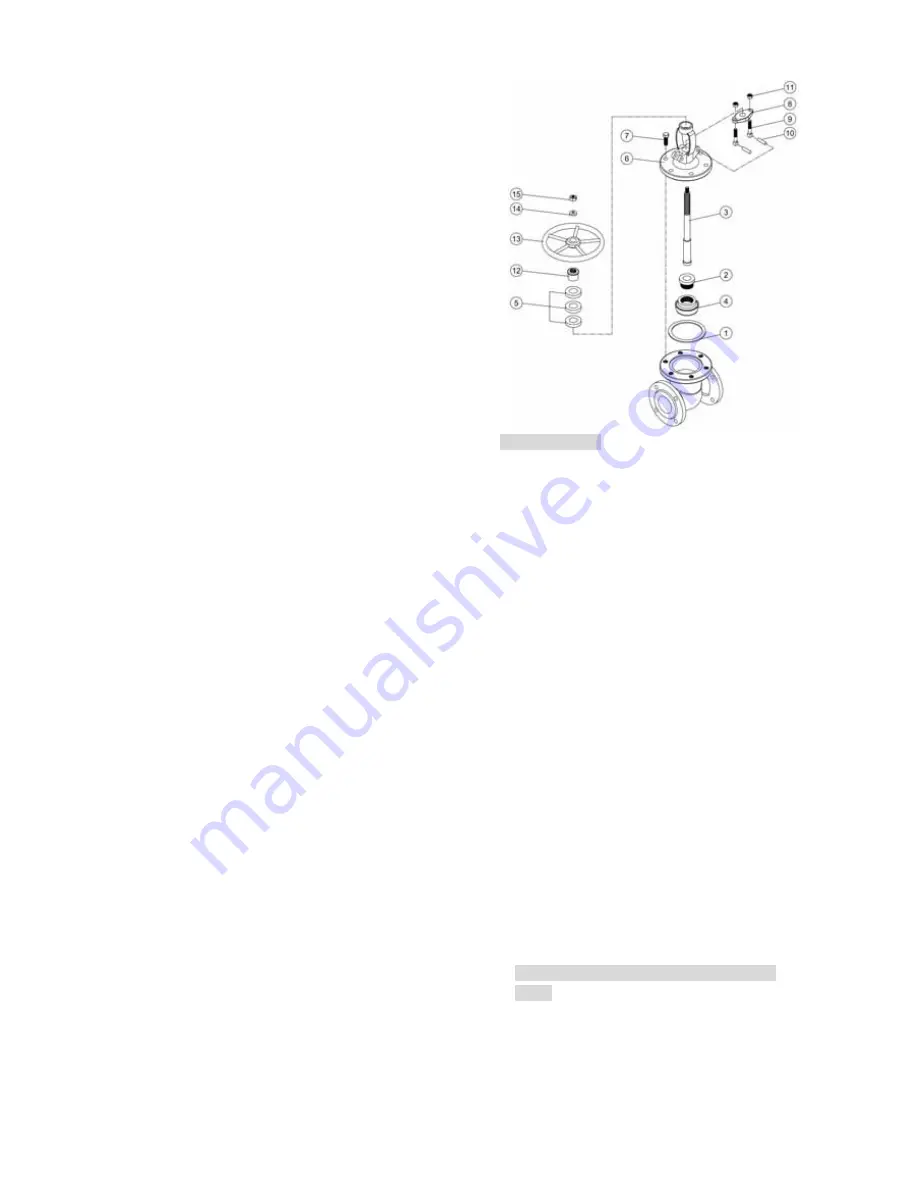
6
d. Parts inspection, maintenance, and
replacement:
(1) Globe the surface of screen if it is scraped
use the PT for inspection if necessary. If
there is any damage on the surface, then find
out the root cause such as the dirt fluid…etc.
avoid the damage factors as far as possible as
we can .
(2) The damage of the screen surface, to gauge if
it is locate on the contacting area of ball and
ball seat. If it is the case, then the ball must
take a fine milling. If it cause a heavy
damaged, then it must welded and
re-machined. If it cannot be repaired then
change a new screen.
(3) If the scraped area is not at the location
described in the item (2)above, then it must
re-fine milling the damage area again.
Otherwise, the screen ball will damage the
soft seat during the open and close operation
or it will dig out the ball seat and cause a
heavy damage to ball and seat.
(4) Globe the thickness of valve body and cap. As
defined in section 1. the body and cap
material may wear be cause of the status of
fluid.User should decide the frequency for
Globeing thickness.
(5) To do the final inspection for a valve, 10
times of open and close operating must be
done to ensure all the parts are assembled
correctly. To ensure the torque is in a same
value during the open/close operation. If the
torque is not the same in operation, then there
may has some parts in an correct position or
interference.please dismantle and re-assembly.
Otherwise, the valve will get damaged easily
when working on pipeline under higher
pressure .
e. Assembly
For assembly process, it takes the opposite
way of dismantle process. The must in the
close position during assembling the body
and end cap, the stopper must be located at
the right place; otherwise, the open and
close operation will be opposite.
9. Corrosion Data
CF8M,1.4408,SS316 Stainless steel is suitable
for the general
Application of corrosion , but below conditions
shall be concerned:
a. HCL in humid or high temperature is more
corrosive, wet HCL is more corrosive than
dry HCL under 700ºF, while the corrosive,
wet HCL and dry HCL are almost the same
above 700ºF. the max. tolerance for dry
HCL and HCI is 320ºC
b. Hydrofluoric acid corrosion easy cause
corrosion.
c. Phosphoric acid under 65ºCis applicable in
any thickness. And so is the boiling
Phosphoric acid in 40%
d. H2SO4 in normal temperature the thickness
under 20% or above 85% are applicable,
but the thickness between 20% and 85%
are not. Under 50ºCthe thickness must be
under 10%, when reach boiling point the
thickness should be under 1%.
e. HCI under 2% in low temperature.
f. Used in seawater minimum content should
be more than 2.75%
10. Use in potential explosive atmosphere
areas
a. Maximum surface temperature
It is depends on the heated fluid inside the
valve. The limitation of the application
temperature is marked on the label. There is
no additional temperature raise cause by
Содержание GLOBE Series
Страница 5: ...3 f Dimensions Parts List ...









